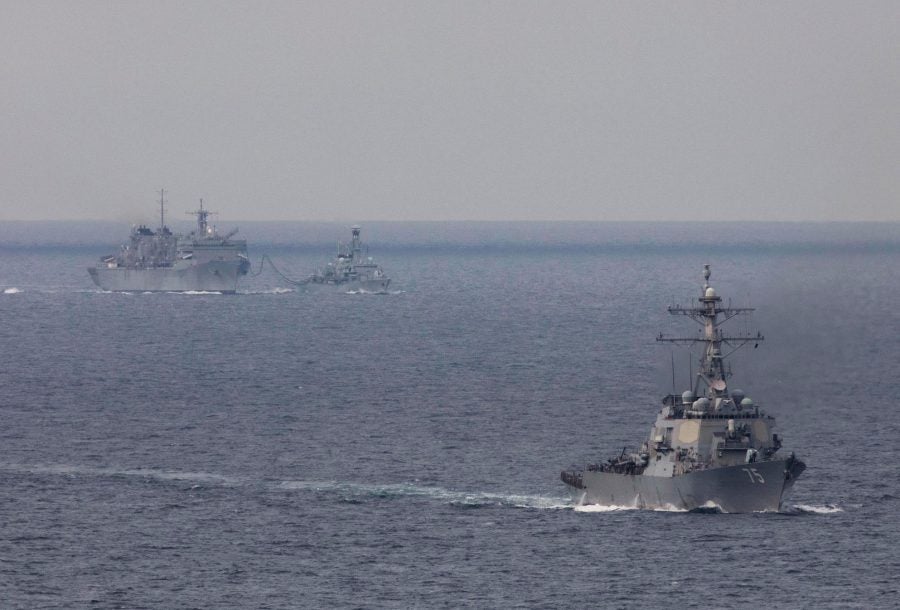
The sailing marks the first time US warships have entered the Barents Sea since the 1980s, where they worked alongside a frigate from the UK’s Royal Navy as part of wider maritime security operations in increasingly contested Arctic waters.
In a press release, the US 6th Fleet said: “U.S. Navy surface ships have not operated in the Barents since the mid-1980s. Allied and partner navies must remain proficient in all operating environments to ensure the continued security and access to the seas. This is especially critical in the Arctic, where the austere weather environment demands constant vigilance and practice.”
Three Arleigh Burke-class destroyers were joined by the USNS Supply and HMS Kent, from the Royal Navy as part of the arctic operation.
US 6th Fleet commander Vice Admiral Lisa Franchetti said: “In these challenging times, it is more important than ever that we maintain our steady drumbeat of operations across the European theatre while taking prudent measures to protect the health of our force.
“We remain committed to promoting regional security and stability while building trust and reinforcing a foundation of Arctic readiness.”
Some of the ships involved in the sailing had previously been taking part in bilateral anti-submarine warfare exercises off the coast of Norway. Before entering the sea, the US said it informed the Russian Ministry of Defence of the plans in order to ‘avoid misperceptions, reduce risk, and prevent inadvertent escalation.’
For its part, commenting on the sailing, the Royal Navy said: “The Royal Navy warship [HMS Kent] continues working with ships from the US Navy to demonstrate our commitment to freedom of navigation in the challenging conditions above the Arctic Circle.”
HMS Kent’s Operations Officer Lieutenant Commander Paul White said: “The Royal Navy is committed to maintaining long-term stability within the high north. HMS Kent, working with US allies, has demonstrated our commitment to global security and freedom of navigation while operating in a multi-national task group in an open and transparent manner.”
In the past year, HMS Kent had completed a deployment to the Gulf before turning north for its current Arctic deployment.
Commenting on the bilateral exercises, Franchetti said: “For more than 70 years, 6th Fleet has operated forces across the region in support of maritime security and stability. Our regional alliances remain strong because of our regular operations and exercises with partner navies, and we welcome this opportunity to work collaboratively at sea, while enhancing our understanding of Arctic operations,”
What is the significance of the Barents Sea?
Commenting on the importance of the Arctic, the US 6th Fleet wrote: “The United States is an Arctic nation and has enduring security interests in the Arctic Region.
“We work with our Arctic and European partners to ensure an open Arctic by continuing freedom of navigation and overflight through the region, as well conducting land, air, and sea operations required for deterrence, presence, and Arctic security.”
Separating Russia and Norway, the mass of the Barents Sea is split between the two countries territorial waters.
In recent years, Russia and China have upped investments in the Arctic region, and the sailing from the US marks part of the US Navy’s response to maintain a foothold in the region.
In the region, Russia operates a mix of submarines, warships and nuclear-powered ice breakers, designed to allow its navy to continually operate throughout the region.
With global warming changing the face of the arctic and the abundance of untapped natural recourses in the region, the Barents Sea and the wider Arctic have seen a build-up of military equipment by Russia, and increasing interest from NATO as both sides seek to maintain access to the area.
The sea is also home to Russia’s Northern Fleet, which operates from a number of ports and shipyards along the coast of the Barents Sea.



